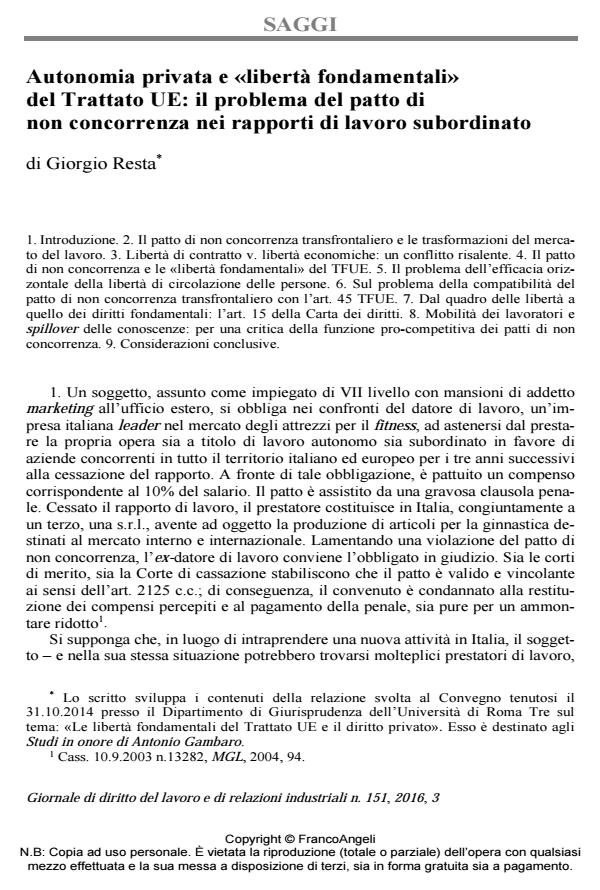Private autonomy and «fundamental freedoms» in the EU Treaty: the question of non-compete clauses in subordinate employment relations
Journal title GIORNALE DI DIRITTO DEL LAVORO E DI RELAZIONI INDUSTRIALI
Author/s Giorgio Resta
Publishing Year 2016 Issue 2016/151
Language Italian Pages 33 P. 437-169 File size 316 KB
DOI 10.3280/GDL2016-151003
DOI is like a bar code for intellectual property: to have more infomation
click here
Below, you can see the article first page
If you want to buy this article in PDF format, you can do it, following the instructions to buy download credits

FrancoAngeli is member of Publishers International Linking Association, Inc (PILA), a not-for-profit association which run the CrossRef service enabling links to and from online scholarly content.
This paper deals with the issue of compatibility of non-compete covenants with the freedom of movement of workers, granted by art. 45 TFEU and with art. 15, European Charter of Fundamental Rights. After having discussed the evolution of the ECJ case law on the horizontal effect of fundamental freedoms, the Author compares the two models of direct and indirect third-party effect and develops a system of control of non compete covenants on the basis of the principle of proportionality. The critical elements of the Italian regime are highlighted and confronted with a law & economics approach of the function of non-compete covenants.
Keywords: Free movement of workers; Horizontal effect; Non-compete covenants; Fundamental rights; Diffusion of knowledge; Law & economics.
Giorgio Resta, Autonomia privata e «libertà fondamentali» del Trattato UE: il problema del patto di non concorrenza nei rapporti di lavoro subordinato in "GIORNALE DI DIRITTO DEL LAVORO E DI RELAZIONI INDUSTRIALI " 151/2016, pp 437-169, DOI: 10.3280/GDL2016-151003